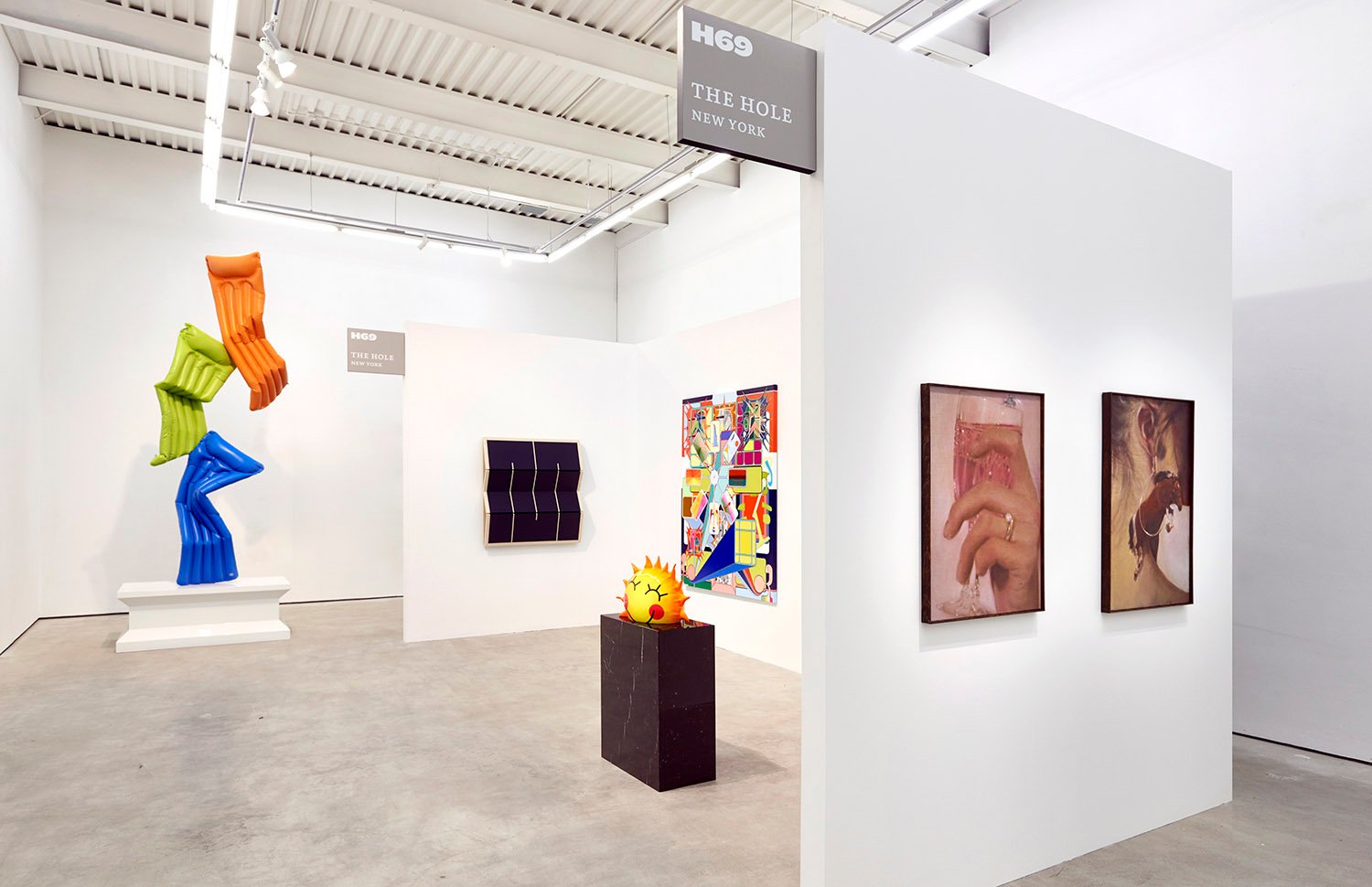
Galleries often spend months preparing for an art fair. So what happens when they are all called off? For one crafty art business, the answer is clear: bring the art-fair booth to the gallery—even if nobody can visit.
The contemporary art gallery the Hole was scheduled to participate in both the Dallas Art Fair and Art Brussels this month, both of which have been postponed. So the staff erected a full-scale fair booth in its home on the Bowery instead.
The booth—which, by typical art fair standards, would be considered an XL—features all the works the gallery had planned to lug to Dallas, including new pieces by Adam Parker Smith, Eric Yahnker, and Koichi Sato. The gallery has even assigned itself a booth number: H69. (Nice.)
But the project is more than a wry, gimmicky take on the virtual art fair model. It’s also a statement.
“It’s obviously an absurd inversion to install an art fair booth in your permanent gallery space,” The Hole’s co-director Raymond Bulman tells Artnet News. Prevailing wisdom, of course, says art-fair booths are a far inferior way to view art than in a gallery. “But when we thought about it, we realized that image would succinctly characterize the circumstance that galleries and artists find themselves in now, trying to present new artworks in a compelling way.”
An installation view of the Hole’s booth for the Dallas Art Fair and Art Brussels. Courtesy of The Hole.
Bulman and the Hole’s founder, Kathy Grayson, built the booth using a small team who worked in incremental shifts, so as to maintain social distance. (Presented with the concern that such a process might have violated New York’s order that employees of nonessential businesses work from home, a spokesperson for the gallery noted that the show was installed slowly and incrementally and workers were never carrying out a task together.)
The images of the ad-hoc booth are being sent to clients and have been uploaded to the Dallas Art Fair website, which is hosting a virtual fair through April 23. (The IRL version, originally due to open this week, has been rescheduled to early October 2020.)
Bulman says the Hole doesn’t expect to lose too many sales in the switch to digital. The gallery has several artists on its roster for whom demand considerably outstretches supply. “I’ve joked that, with certain artists, we could have the same results holding an art fair in my childhood basement,” he says.
By day two of the online Dallas fair, the Hole had sold many works from its virtual-but-also-real booth, including two wood-panel works by Robert Moreland for between $5,000 and $10,000; a resin sculpture by Adam Parker Smith priced at $30,000; a drawing by Joakim Ojanen for $7,500; two drawings by Aurel Schmidt for $5,000 each; a painting by Morgan Blair for $15,000; a painting by Jonathan Chapline for $12,000; and three works on paper by Koichi Sato for $5,000 each.
“Less than sales, the more tangible impact of not attending the fairs in person is that we don’t connect with different people in different cities,” Bulman says. “Usually at an art fair, a portion of our sales will be to known quantities, and our efforts will be put more toward placing the works in the best possible hands. But there are other times when you get surprised by an unexpected sale or new client—that’s really the pure value of a fair.”
If you, too, are feeling nostalgic for a time when you could network inside a white-walled booth, just log onto the Hole’s Dallas Art Fair page, put on some real pants, and imagine you are there.
See more images of the booth below.
An installation view of the Hole’s booth for the Dallas Art Fair and Art Brussels. Courtesy of The Hole.
Eric Yahnker, Rosé (2020). Courtesy of The Hole.
Adam Parker Smith, Sabine Pool Floats (Orange, Green, Blue) (2020). Courtesy of The Hole.
Aurel Schmidt, Cookie (2020). Courtesy of The Hole.
An installation view of the Hole’s booth for the Dallas Art Fair and Art Brussels. Courtesy of The Hole.
Koichi Sato, Part? (2020). Courtesy of The Hole.
Eric Shaw, Untitled (2020). Courtesy of The Hole.